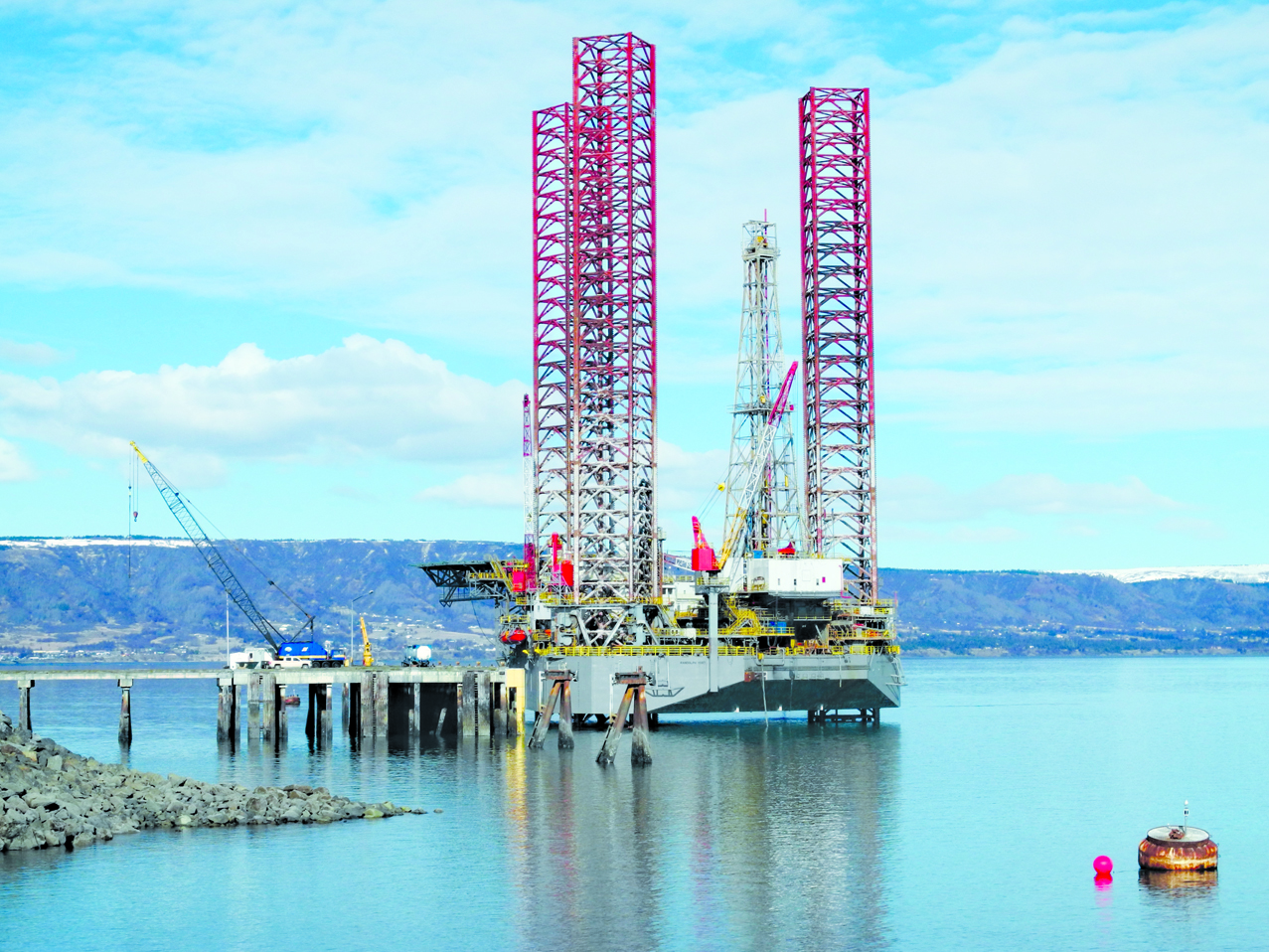Despite pessimistic oil and gas outlooks, two companies are conducting seismic data-gathering activities on the Kenai Peninsula this spring and another is planning more exploration work.
Hilcorp Alaska is planning to gather more seismic data on the oil and gas beneath the southern Kenai Peninsula, and SAExploration, a Houston, Texas-based oilfield services company, is gathering 2D and 3D seismic data on an area of the northern Kenai Peninsula near Nikiski. After April 1, Furie Operating Alaska plans to use a jack-up rig to drill new wells in its Kitchen Lights Unit.
Hilcorp, which also is based in Houston, contracted with Global Geophysical Services, Inc. to do a seismic survey of the area east of Anchor Point. The exploration is planned to through roughly May 31, and will cover a scattering of different lands on the southern peninsula. The Alaska Division of Oil and Gas is working to respond to public comments and approve the application.
The areas included will be near the North Fork of Deep Creek, an area south of Ninilchik on Stariski Creek, the whole vicinity of Anchor Point, a patch of land north of Homer on South Beaver Creek and an area near the end of East End Road.
Global Geophysical Services plans to primarily use shotholes as an exploration method, though vibroseis — using heavy trucks pressing plates to the ground to shake the earth and measuring the reaction on ground-based sensors — is still a possibility.
The company plans to drill 800 shotholes, 3 inches wide and 35 feet deep, approximately 330 feet apart in the exploration areas.
Shothole drilling will be supported by helicopters, and if necessary, the company will clear an 8-10-foot diameter space around each hole to allow access, according to the application. All the equipment and personnel will come from Deadhorse and Anchorage, setting up a base of operations on private property between Ninilchik and Anchor Point.
However, the company may look to hire support personal and utilize services locally, such as housing and waste disposal, according to the application.
“Efforts will be made to hire community members and utilize local resources for select support positions,” the application states.
Some have raised concerns about the environmental impact of Hilcorp’s seismic work, though.
Bob Shavelson, executive director of Homer-based conservation organization Cook Inletkeeper, wrote in a public comment on Hilcorp’s application that the company “does not have a realistic grasp of the complex and sensitive habitats in which it seeks to operate.”
Shavelson called for more detailed information from Hilcorp about the fish habitat in the proposed exploration areas, saying the application did not include detailed enough information about stream crossings. He also noted that while the company treated shotline trajectory as confidential, it released that information at a community meeting in Anchor Point and to the private landowners.
“While Inletkeeper is disappointed in the cursory information provided by the applicant to make important decisions around our invaluable salmon habitat, its intent is to help DNR and other state and federal agencies improve the process for assessing the impacts — and mitigating the impacts — from projects such as the South Kenai 2D program,” Shavelson wrote.
SAExploration’s project is in a more limited space north of Nikiski and being conducted entirely from helicopters, according to the application, which was approved Jan. 8. The area includes 85 square miles in portions of the northern Kenai National Wildlife Refuge and adjacent to Captain Cook State Recreation Area.
The work was originally expected to run through April 15, but it may be done by the end of March, said Rick Trupp, the general manager for SAExploration’s Alaska operations. The company was contracted by Cook Inlet Region, Incorporated, to do the exploration work, Trupp said.
“We have a staging site that’s fairly close to the coast, and we’re supporting operations from on the refuge,” Trupp said.
CIRI’s goal in the project is to gain more specific information about the resources that it is fairly confident are there, said Jason Moore, the senior director of corporate communications for the corporation. It is a fairly small-scale operation compared to other seismic work, Moore said.
“We’re confident there’s gas resources where we’re looking,” Moore said. “We’re trying to get some very specific data.”
In addition to the Hilcorp and SAExploration projects, Furie has applied to conduct further exploration projects in its Kitchen Lights Unit near the west side of Cook Inlet.
Furie plans to drill nine more wells over the course of the next five years, or roughly two wells per year, according to its permit application. The exploration will drill through the Tyonek and Hemlock formations into the Jurassic formation.
To conduct the exploration, the company has brought a new jack-up rig to the Kenai Peninsula, the Randolph Yost. The rig is currently docked in Homer for mechanical modifications and will be deployed to the Kitchen Lights Unit when the drilling season opens on April 1, according to Furie Senior Vice President Bruce Webb.
Webb said the company is ready to drill, but the rate at which the wells will be drilled will depend on what the Legislature decides about the oil and gas tax credit program. Furie is a relatively small company and has invested a fair amount in the Cook Inlet area and is just beginning to see the first money come back from its investments, he said.
“We’re told when is the first day we can be out there,” Webb said. “A lot hinges on what the state does with the (oil and gas) tax credits.”
Elizabeth Earl is a reporter for the Peninsula Clarion.



